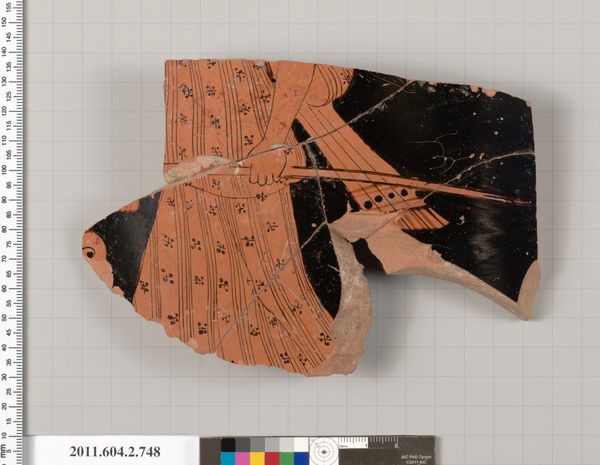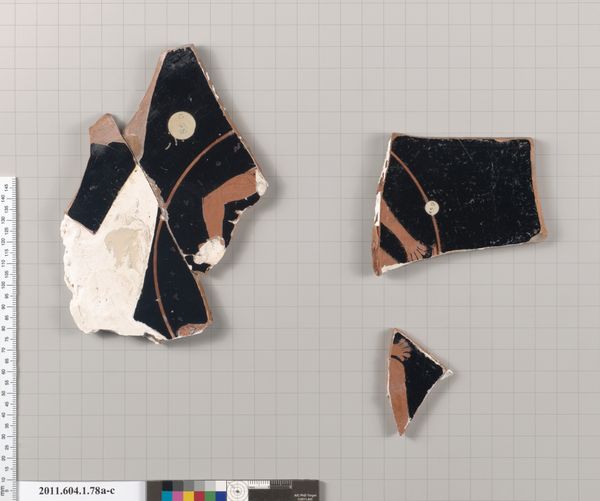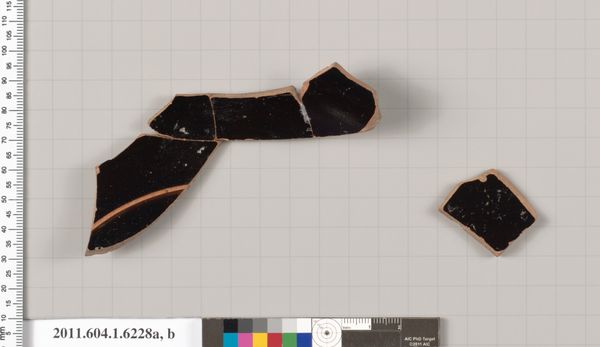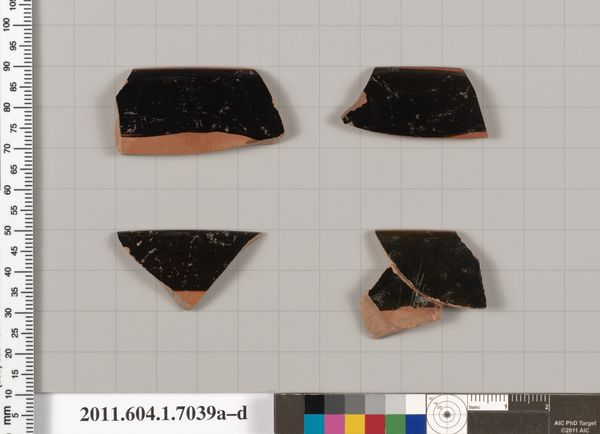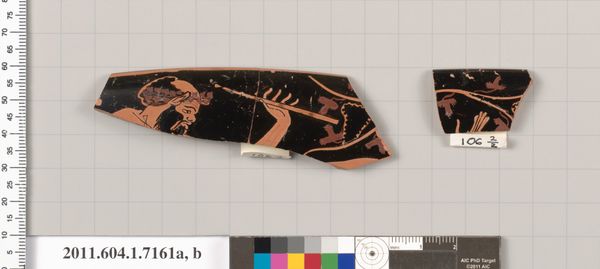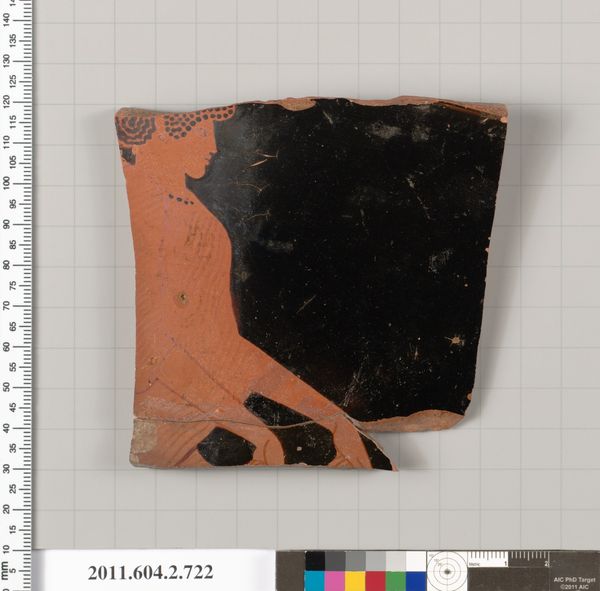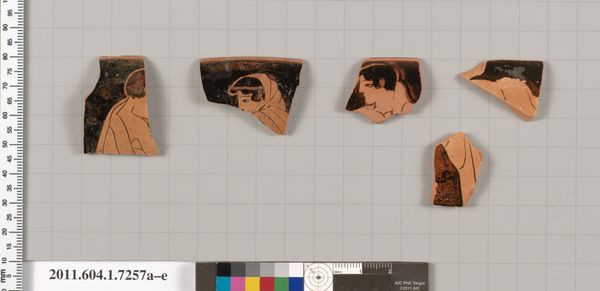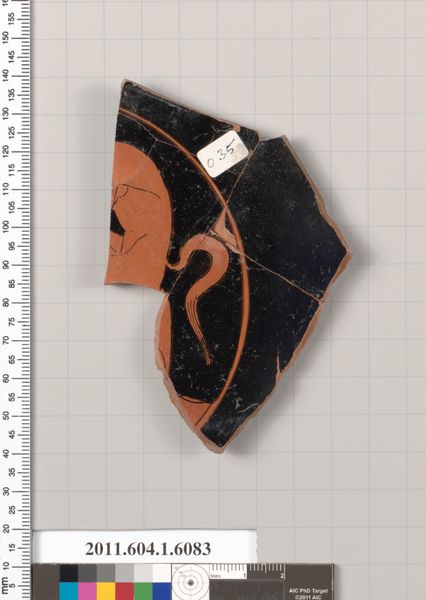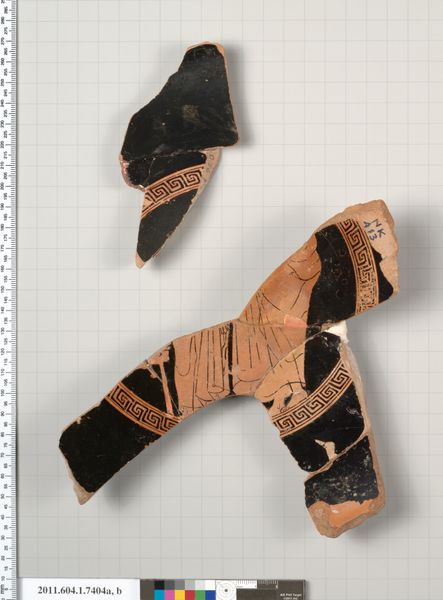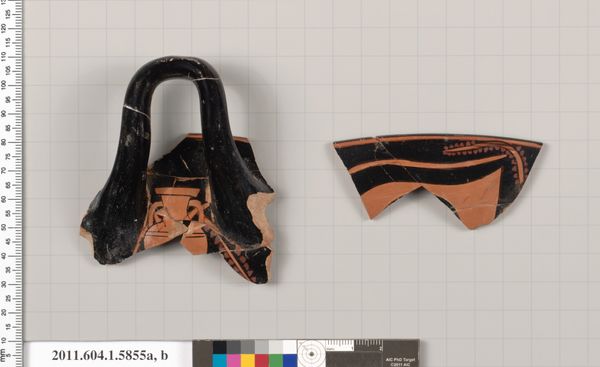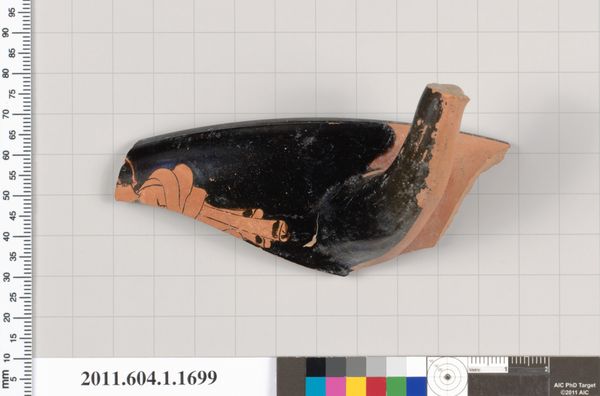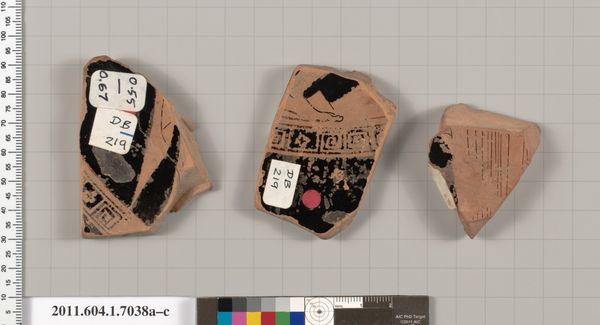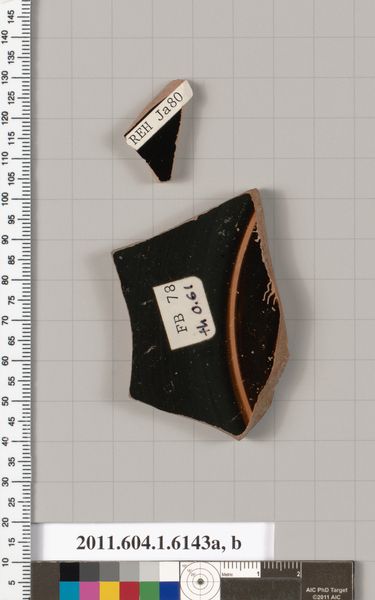
Terracotta fragments of a kylix: eye-cup (drinking cup) 530 BC
0:00
0:00
ceramic
#
greek-and-roman-art
#
ceramic
#
vase
#
figuration
#
roman-art
#
ancient-mediterranean
Copyright: Public Domain
Curator: Seeing these fragments evokes such a sense of loss. A reminder that so much of history is pieced together from what remains. Editor: It's compelling, though! The glossy black paint against the terracotta feels tactile, earthy. You can almost feel the potter's hands on the clay. Curator: Indeed. What we have here are terracotta fragments from a kylix, or drinking cup, specifically an "eye-cup," dating back to around 530 BC. It's currently housed at the Metropolitan Museum of Art. Notice the remnants of the eye designs, thought to ward off evil as one drank. Editor: Right, the "eye-cup"—but it's more than just ritual, isn’t it? This piece reflects the standardization within ceramic production, almost an assembly line, where many hands contributed to its making. From the person mining clay to the painters—these vessels democratized art. Curator: Precisely. Athenian workshops became centers of artistic and economic influence, shaping the very nature of how people interacted with art and ritual objects. Kylixes were integral to symposium culture, spaces for male elites to debate and forge political alliances, all the while imbibing wine. Editor: Consider also the life of this object; meant to be handled, used—possibly broken during boisterous gatherings, finally buried. A fascinating glimpse of value assigned to clay and color. The black-figure technique of this period—meticulously rendered, though abstract—shows a mastery that elevated craft into high art. Curator: And the dissemination of these images mattered too. This imagery entered the civic sphere and became emblematic of Athenian identity, impacting its societal and cultural values. The "eyes," whether apotropaic or decorative, show how imagery operated in daily life, and how public opinion gets influenced by it. Editor: Seeing this dismantled like this, makes me more curious. Instead of just one object, one person drinking in symposiums, its scattered shards are the true reminder of its past. Curator: Absolutely, the brokenness offers a powerful and rare reminder of the lived experience. Editor: Exactly. Thank you, curator.
Comments
No comments
Be the first to comment and join the conversation on the ultimate creative platform.

